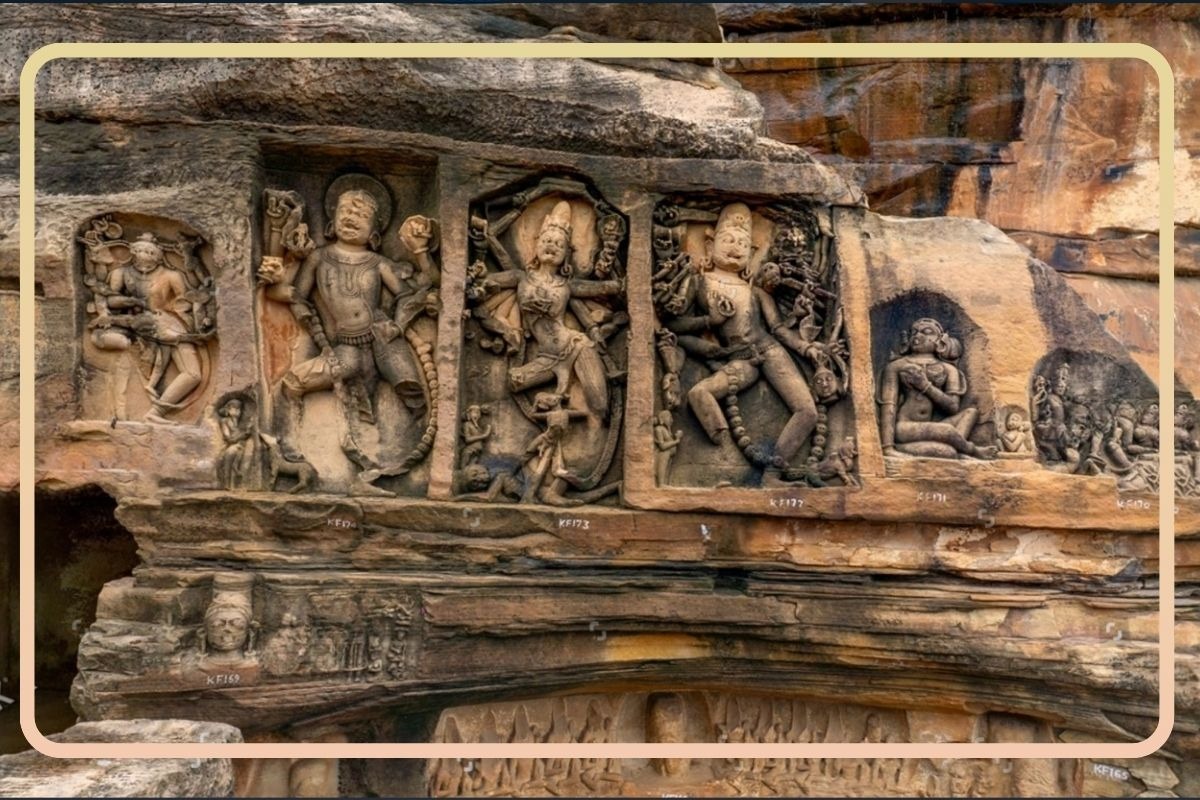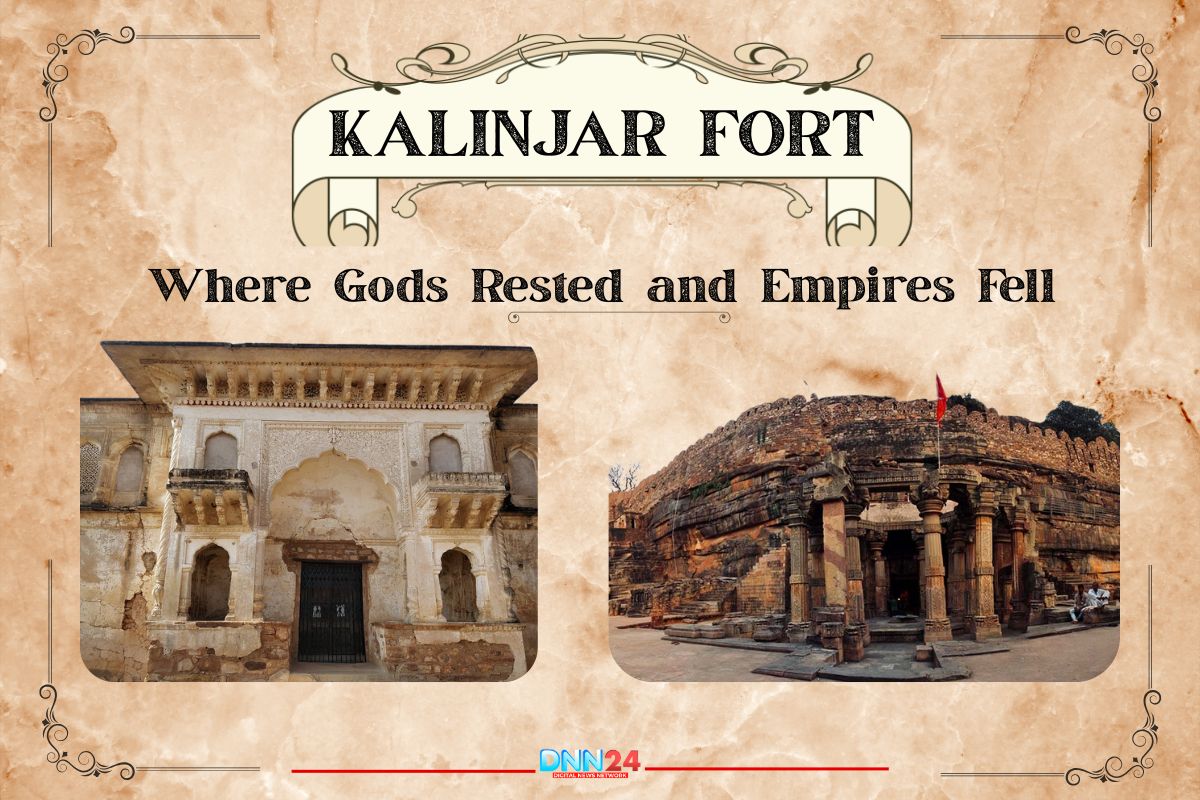Can a fortress really conquer time itself? In the rugged Vindhya hills of Banda district, Uttar Pradesh, stands a place where mythology walks hand in hand with history. Kalinjar Fort is not your ordinary tourist spot with a guide rattling off dates and names. This is different. The rocks here have absorbed centuries of prayers, battles, and silence. Local belief says Lord Shiva came here after drinking poison during the churning of the cosmic ocean, and the Neelkanth Mahadev Temple at the fort’s heart still draws thousands who want blessings from the god who defeated death.

The name itself tells you everything: “Kal” means time or death, and “jar” means destroyer. So Kalinjar literally means “the destroyer of time”. Empires wanted it. Saints blessed it. Poets wrote about it. Soldiers died for it. Today, when you climb its steep paths and touch walls that have stood for over a millennium, you feel something rare, a connection to people who lived centuries ago but felt the same sun, walked the same stones, and looked out at the same vast horizon. This fort does not lecture you about the past. It lets you feel it in your bones.
Kalinjar Fort: A Stage for Kings and Conquerors
Kalinjar’s history reads like an action novel where every chapter brings a new ruler, a new battle, and a new twist. The Mauryas and Guptas knew this place well, but it was the Chandela dynasty that truly made Kalinjar their pride. These kings built temples, carved inscriptions, and turned the fort into a symbol of their power and devotion. Mahmud of Ghazni, that relentless invader from the north, tried his luck in 1023 AD but found the Chandelas tougher than expected. Years later, Sher Shah Suri, the Afghan ruler who gave India the Grand Trunk Road, laid siege to Kalinjar in 1545. But fate had other plans. A cannon exploded during the attack, and Sher Shah was fatally wounded.

He died shortly after, making Kalinjar the place where one of India’s most capable rulers met his end. The Mughals eventually grabbed the fort in 1569, and Emperor Akbar handed it over to his clever minister Birbal. Later, the Bundelas and Rajputs fought tooth and nail to reclaim what they saw as their heritage. When the British arrived, Kalinjar became a rebel stronghold during the 1857 uprising. The British crushed the resistance, but Kalinjar’s reputation as a place where ordinary people stood against mighty armies was sealed forever. Every ruler left their mark here, temples next to mosques, Hindu carvings beside Persian inscriptions, a beautiful chaos of cultures meeting on stone.
Kalinjar Fort: Why Kalinjar Never Truly Fell
What makes Kalinjar special is not just its walls, which rise forty-five metres high in places, or its seven massive gates that forced attackers to climb and turn and climb again. It is the stubbornness of the place and its people. Alauddin Khilji tried in 1303. Qutubuddin Aibak tried before him. They won battles but never really won Kalinjar because the spirit here refused to break. Local stories tell of villagers who joined forces with soldiers, of clever tactics like rolling boulders down on enemies, and of secret water sources that kept defenders alive during months-long sieges. The thick forests around the fort made surprise attacks nearly impossible.

The rocky terrain was a nightmare for cavalry. Nature itself seemed to guard Kalinjar. People believe the presence of Shiva’s temple gives the place a protective energy. During the 1857 revolt, when British forces finally took control, they found the fort half-destroyed but never defeated. Even in ruins, Kalinjar commanded respect.
Today, during Kartik Purnima, thousands gather here for fairs and festivals. They come not just for religious reasons but to honour a place that represents survival against odds. The fort reminds everyone that defeat is temporary if your story remains alive. Kalinjar’s walls have cracks and gaps now, but they still stand, and that means something to the people who call this region home. Survival here was never about luck. It was about will.
Kalinjar Fort: Kalinjar Speaks to Modern India
Walk through Kalinjar today and you will see school groups with notebooks, young couples taking selfies at sunset, historians with cameras documenting every carving, and elderly pilgrims touching the temple walls with quiet reverence. The fort has unexpectedly found new life. UNESCO recognition brought global attention. Travel bloggers write about the magical light at dawn.
Historians publish papers on its military architecture. Artists sketch its gates and temples. Writers use Kalinjar as a metaphor for resilience in their novels and poems. The government has started hosting heritage festivals here, complete with light and sound shows that bring history alive for people who might never read a textbook. Local schools organise trips so children can see where their ancestors fought and prayed.

Social media is full of posts about Kalinjar, each one trying to capture its mood; some succeed, some do not, but all show that people care. Restoration work is slow but steady, with experts trying to preserve what remains without destroying its character. There is talk of better facilities for tourists, cleaner paths, and information boards in multiple languages.
Some worry this will turn Kalinjar into just another commercial spot. Others argue that if more people visit, more people will want to protect it. The debate continues. What is clear is that Kalinjar matters to Indians in ways that go beyond history lessons. It represents something fundamental: the idea that your story can outlast any conqueror if you refuse to forget it.
Kalinjar Fort:The Fortress That Refuses to Die
So what is Kalinjar in the end? A pile of old stones? A religious site? A tourist attraction? Perhaps it is all these things and something more. Standing on its heights, with wind carrying the scent of earth and temple incense, you understand why people keep coming back. Kalinjar does not demand anything from you. It simply exists, patient and permanent, waiting for you to notice. The same gates that medieval soldiers stormed now welcome curious visitors. The same temple where kings prayed now sees college students seeking peace during exams. The same walls that witnessed bloodshed now watch children play in their shadows. Time moves, but Kalinjar remains.

It has seen India change from a collection of kingdoms to a colony to an independent nation, and through it all, these rocks have stood firm. The fort asks a question without words: What will you leave behind that matters? Not wealth or fame, but something that speaks when you are gone. Every carving here, every inscription, every stone placed by unknown hands centuries ago, is someone’s answer.
Kalinjar conquered time not by stopping it but by staying relevant across it. And that is perhaps the real lesson. Your story does not need to be grand. It just needs to be true enough that people remember it, value it, and pass it on. Kalinjar’s tale continues, and maybe you will add to it someday, in whatever way suits you best.
Also Read: Tomb of Sher Shah Suri: An Emperor’s Dream Palace Floating On Water
You can connect with DNN24 on Facebook, Twitter, and Instagram and subscribe to our YouTube channel.

